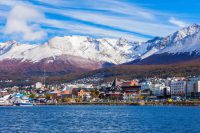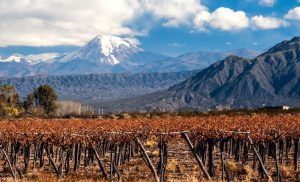International travel is all about experiencing new sights, sensations and cultures. For many parts of the world, this includes gastronomy as much as history or geography. When you think of food and wine holidays, your mind may rush to France, Spain or Italy, but here’s one destination you may have overlooked: The Antartic.
The Antartic, the earth’s southernmost region, is located around the south pole and contains Anarctica and numerous island territories. The region may not be particularly well known for its cuisine or its wine, but adventurous foodies and wine lovers might be pleasantly surprised.
What sort of food do they eat in the Antartic?
The Antartic is not known for its restaurants or nightlife. The region is sparsely populated, and most people that live there operate scientific research stations. These guys are usually not so concerned with haut cuisine, to tell the truth. When you carry out scientific experiments in sub-zero temperatures, you don’t really have time to get fancy with what you eat.
On top of that, it’s not exactly prime farming land. Agriculture is (almost) non-existent in the Antartic, so they import most of their food. Because of the freezing temperatures, people choose food based more on practicality than preference. When it comes to survival in Antarctica, you don’t want your food to freeze before you’ve had the chance to eat it. As a result, Antartic scientists prefer to eat chocolate bars than sandwiches, apparently!
About 40,000 tourists descend upon the region each year, and not all will be content to eat chocolate all day. Despite limited options, there are some distinctive Antartican food recipes out there. Among the most appetising are:
- Bread: Simple, wholesome, baked bread. Mmm.
- Sledging biscuit: Not the most appetising thing in the world, but this local speciality is a hard biscuit full of energy and with a suitably long shelf-life. Locals often adorn their biscuit with whatever toppings they have to hand.
- Pemmican: This is a highly compacted bar of meat and fat. It may not sound great, but it’ll fill you right up. Local Antartic meat such as buffalo, caribou or deer are all fair game.
- Hoosh: The product of necessity, most likely. This is a makeshift “stew” put together with pemmican, sledging biscuit and snow (or water, if you’re not in the Antartic wilderness).
Is there Antartic wine?
We said that there’s almost no agriculture in Antarctica, but there is some. One potentially surprising crop is the humble grape vine – on a very small scale, they make wine in Antarctica. As one of the harshest and most remote environments on earth, it’s understandably difficult to grow grapes here. This isn’t Bordeaux or the Napa Valley. To call Antartic wine a “cottage industry” would be an overstatement.
There is one prominent producer, James Pope, whose vineyard is in the McMurdo Dry Valleys in southern Antarctica. The freezing conditions are treacherous, though they lend themselves relatively well to producing icewine. This is a sweet dessert wine, best known in Germany and Canada. The grapes have frozen by the time they’re picked, leading to a huge concentration of sugar as the water content is ice.

Antartic food and wine pairing
You won’t find Antartic icewine too easily, and you may not choose Antartic style food unless you’re physically there. If you have the ways and means, however, you could certainly enjoy a little Antartic food and wine pairing.
- The food: Let’s go with a sledging biscuit, shall we? As we’re going to serve it with a sweet wine, we may want to up the food’s sweetness level accordingly. Top the biscuit with chocolate shavings, honey, or another sweetener of your choice.
- The wine: An icewine from Antarctica, though if you can’t find one then go with a Canadian icewine or German Eiswein.
- The result: It’s not exactly oysters and Champagne, but this Antartic duo is actually a pretty tasty pairing. Sweet food and sweet wine are usually a happy match, and that’s certainly the case here.
No comments yet
There are no comments on this post yet.






Leave a comment